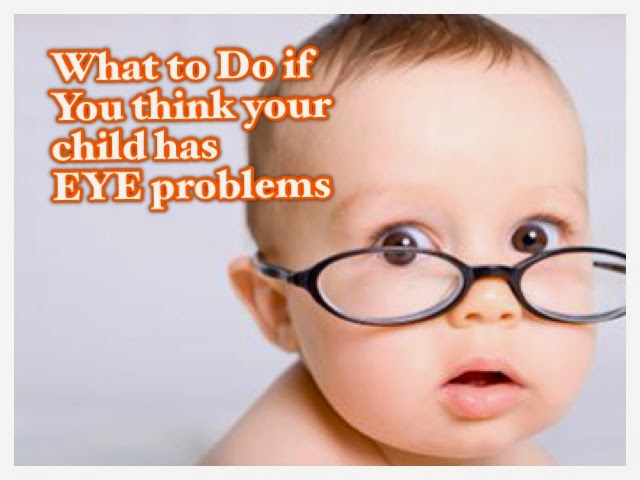As a parent, your primary goal is to ensure that your kids have the assistance and guidance they need to become successful, independent adults. You’re driven to look after them, keep them safe and treat any problems that may crop up along the way. Treating the occasional flu or a bout with chicken pox is one thing, but how do you treat a problem if you’re not quite sure that it exists? One of the more difficult issues for parents to accurately identify, especially in very young children, is problems with vision. Unless your child is actively squinting when she tries to focus on an object or is holding a book too close to her face for comfort, you may not be able to spot the signs of vision problems if you’re not well-versed in the symptoms. Knowing what to do in terms of treatment, prevention and correction isn’t always easy, but there are a few things you can keep in mind to make the journey a bit less complicated.
Know the Symptoms
Classic symptoms of vision issues, like squinting and sitting too close to the television, are red flags for parents, but what many don’t realize is that there are a host of other, subtler signals that can indicate a struggle to see clearly. For newborns, it’s even more difficult to discern any problems because their eyes are not fully developed. In older infants, however, the warning signs can be easier to spot. Irregular movement, one eye that stays stationary while the other moves normally, one eye that’s consistently closed or the failure of mobiles, lights or movement to catch her attention can be cause for concern and should be discussed with her pediatrician at the next well child exam. Toddlers and older babies may bump into furniture or walls when they’re crawling or learning to walk, rub their eyes frequently when they’re not sleepy, cover one eye to see things better and lose their balance when standing from a seated position.
Schedule an Appointment with an Eye Doctor
Around preschool age, even if your child is not exhibiting any signs of vision problems or difficulty seeing, it’s wise to make an appointment with an eye doctor. Even if he can’t yet read, there are still vision tests that can be performed on a young child that are capable of diagnosing many common sight problems. Rather than trying to diagnose a vision problem yourself, it’s important that you make arrangements for your child to visit the eye doctor for a check-up and full exam.
Prepare Her for Glasses
If you suspect that your child is having trouble with her vision, it may be a good idea to start talking about what glasses are used for, how they help people who have trouble seeing and how important they are to people whose sight is compromised. Your child may leave her first ophthalmologist’s appointment with nothing more than a sticker and a pat on the back, but she may leave with a brand new pair of glasses that she’s less than thrilled about. If you have reason to suspect that your child might be suffering from some vision issues, the best course of action is to ensure that she’s prepared for the possibility of corrective measures.
Rethink Harsh Punishments
Kids who can’t see clearly at school may suffer a drop in academic performance, become less active participants in the classroom and show a negative change on their next report card. Because a good education is so important, many parents are quick to treat academic neglect with a zero-tolerance policy, but it’s best to rethink things if your child is also showing other signs of having trouble seeing. The last thing you want to do is punish a child who’s already struggling for doing badly in school. Before flying off the handle when kids act out in school or return home with bad grades, stop to consider whether or not having difficulty seeing could be the motivating factor behind these behaviors.
Continue reading.

